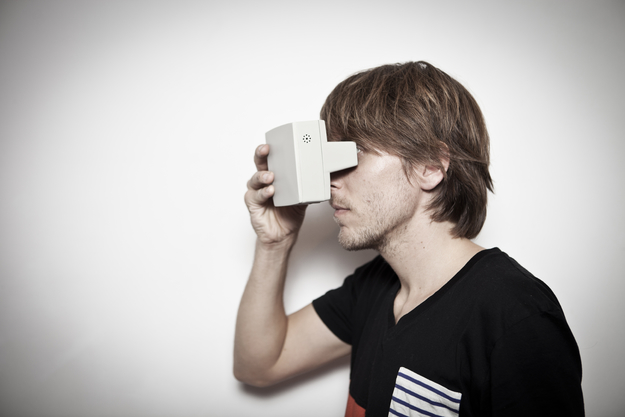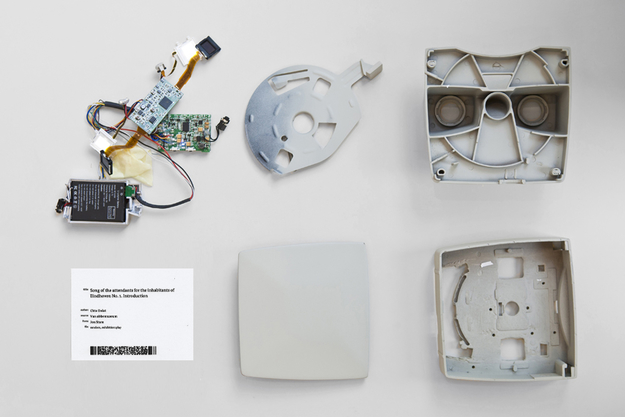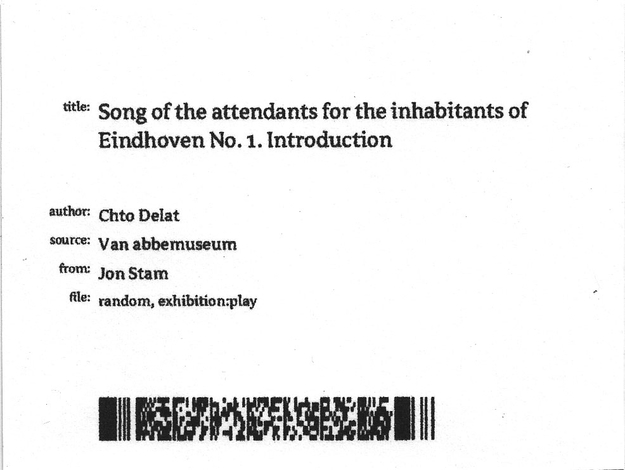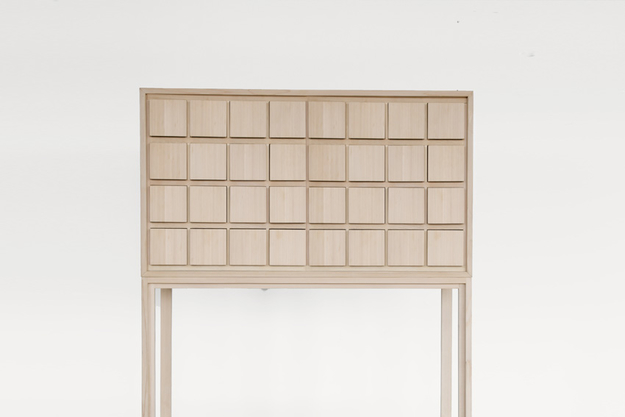HOW IT WORKS
This Imaginary Museum project consists primarily of three parts: 1) a web-platform that enables anyone to upload or link digital content under a given category, which then produces a print-ready index card with title, category, contributor, and 2d barcode of the linked content; 2) a card catalogue cabinet with integrated network printer, which automatically prints each contribution to be filed in the cabinet drawers; 3) a digitally hacked View-Master with integrated barcode reader and micro-LCD screens, which which triggers content to view when each index card is inserted in the viewing device.
Contributors to the Imaginary Museum can donate interesting and meaningful digital content to the collection by uploading or linking media through a website. The website will generate a coded link (barcode) for each contribution, which will be made physical in the form of an index card by a printer integrated in the collection cabinet. The collection can be curated through the arrangement of the index cards in the drawers of the cabinet, based the public contributions and the current topics being explored by the institution where the Imaginary Museum is housed.
Visitors to the Imaginary Museum can engage with the card catalogue in a physical search based on their own interests and curiosity. By choosing a card and inserting it in the viewer the linked media will begin to play on two small LCD screens inside the viewing device. The visitor can look inside the viewing device to intimately consult virtual imagery, and listen to its audio through external speakers.
1) WEB-PLATFORM
The intrinsically linked cabinet and web-platform combine the experiential and physical power of classical systems with the infinitely expanding power of the network. The web-platform stimulates online and active participation to share digital culture. This makes it possible for an individual to contribute things they value within the context and motivation of the participating institution (where the collection cabinet is housed).
2) COLLECTION CABINET
The collection cabinet offers offline, but also active physical participation, rooted in the context and motivation of both individual and the institution. The materiality of the cabinet (referenced on the library card catalogue) aims to enhance the experience of browsing content, going beyond the two-dimensional screen, as well as giving a more poetic form then current media archives. The use of printed cards to both index and trigger digital content make the expansion of the collection easy and no more costly the paper and ink that is used to create them.
3) THE VIEWING DEVICE
The viewing device plays with the boundaries and qualities of material and e-culture, as well with the dynamics of the public and private space. The viewing device augments the virtual image through carefully designed optics, stereoscopy, illumination, and viewing distance, giving a textured effect not unlike film. The form and materiality of the viewer (referenced on the View-Master stereoscopic viewer) aims to take the aesthetic experience to higher level, going beyond the ‘tech’ aesthetics of more commercial head mounted displays, as well as giving a more personal experience then interfacing through a smartphone. The private and intimate viewing space is coupled with the a public presentation of content's audio, which aims to arouse the passer-by's curiosity, as well as stimulate the user to share their visual experience with others.



